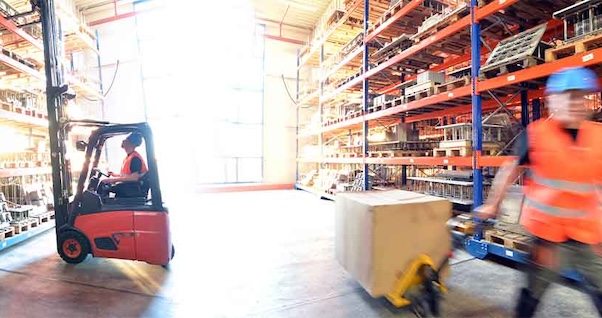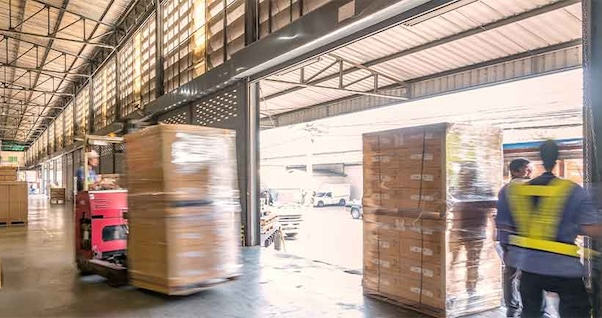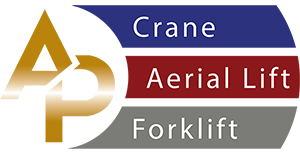
Efficiently managing forklift traffic is crucial for maintaining smooth operations, maximizing productivity, and ensuring the safety of both employees and equipment. In this article, we'll delve into key strategies, best practices, and safety measures that can help you navigate the challenges of forklift traffic management.
The Importance of Forklift Traffic In Warehouse
Forklifts are the workhorses of warehouses, enabling the movement and transportation of heavy loads with ease. Forklift traffic in the warehouse is a dynamic process that involves the seamless coordination of machinery, materials, and personnel. However, improper management of forklift traffic can lead to accidents, delays, and reduced efficiency. To maintain a well-functioning warehouse, it's essential to strike a balance between operational speed and safety.
Managing Forklift Traffic: Best Practices
Prioritizing Path Design and Layout
Creating an effective layout for your warehouse is the foundation of efficient forklift traffic management. Forklift traffic flow should be optimized to minimize congestion and bottlenecks. Consider factors like aisle width, turning radius, and designated paths for forklifts. Labeling these paths clearly and using floor markings can help drivers navigate safely.
Implementing Technology Solutions
Incorporating technology can significantly enhance forklift traffic management. Forklift fleet management systems with real-time tracking can provide insights into vehicle locations, speed, and routes. These systems allow supervisors to identify areas of improvement and make data-driven decisions to optimize traffic flow.
Ensuring Safety in Forklift Operations
Training and Certification
Prioritize comprehensive training for forklift operators. Training programs should cover safety protocols, equipment operation, and emergency procedures. Certified operators are more likely to handle the machinery skillfully, reducing the risk of accidents.
Regular Maintenance and Inspection
A well-maintained forklift is a safe forklift. Regular maintenance checks, including brake inspections, fluid levels, and tire conditions, are essential. Faulty equipment can lead to accidents, impacting both employees and the warehouse infrastructure.
Effective Communication and Signage
Clear Signage and Markings
Proper signage is crucial to guide both forklift operators and pedestrians. Use forklift traffic signs that indicate speed limits, no-entry zones, and pedestrian crossings. Bold and easily visible signage helps in preventing collisions and ensuring a safe work environment.
Establishing Communication Protocols
Promote effective communication among warehouse personnel. Implement protocols such as two-way radios or communication apps that allow operators to relay information and updates in real-time. This enhances coordination and reduces the chances of misunderstandings.
OSHA requires that permanent aisles and passageways be free from obstructions and appropriately marked where mechanical handling equipment is used. [29 CFR 1910.176(a)]
Obtaining OSHA forklift certification is a pivotal step towards maintaining a safe and compliant work environment. This certification demonstrates that operators possess the necessary skills and knowledge to handle forklift operations in accordance with OSHA regulations.

FAQs About Forklift Traffic In Warehouse
1. How can I reduce forklift-related accidents in my warehouse?Reducing forklift-related accidents requires a multi-pronged approach. Start by providing thorough training to operators, ensuring regular equipment maintenance, and implementing technology solutions for real-time monitoring. By focusing on operator skills, equipment reliability, and data-driven decision-making, you can significantly decrease the risk of accidents.
2. What are some common challenges in managing forklift traffic?Managing forklift traffic comes with various challenges, including congestion, blind spots, and pedestrian interaction. These challenges can be addressed by designing an efficient layout, using clear signage, and establishing communication protocols. Regular assessments and adjustments to your traffic management strategies will help in overcoming these obstacles.
3. How do I create a forklift-friendly warehouse layout?Designing a forklift-friendly warehouse layout involves careful consideration of factors like aisle width, turning radii, and clear pathways. Collaborate with experts who understand warehouse logistics and forklift operation to create a layout that minimizes bottlenecks and maximizes efficiency.
4. What role does technology play in forklift traffic management?Technology plays a pivotal role in modern forklift traffic management. Forklift fleet management systems offer real-time tracking, allowing supervisors to monitor vehicle locations, optimize routes, and identify areas for improvement. This data-driven approach enhances efficiency and safety in warehouse operations.
5. How often should forklift operators undergo training and certification?Forklift operators should undergo initial training before operating the equipment and receive refresher courses periodically. The frequency of refresher training depends on factors like the complexity of tasks, changes in equipment, and the level of experience of the operator. Regular training ensures that operators remain skilled and updated on safety protocols.
Efficient forklift traffic management is the backbone of a productive and safe warehouse environment. By prioritizing proper layout design, technology integration, safety protocols, and communication strategies, you can streamline operations and create a workspace that benefits both employees and the business. Remember, investing in forklift traffic optimization is an investment in the long-term success of your warehouse operations.
Adhering to strict workplace forklift safety regulations is paramount for minimizing risks and ensuring the well-being of employees. By following these guidelines, organizations create a secure environment where forklift operations are carried out with precision and adherence to regulations.
